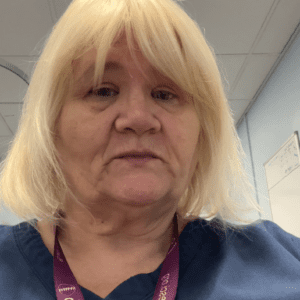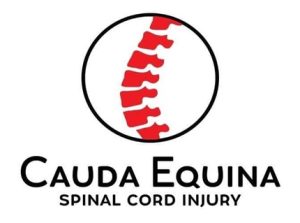News
Cauda Equina Syndrome (CES) Awareness Day 2025
CES Awareness Day is a national awareness campaign dedicated to Cauda Equina Syndrome
Established by the Champions Charity, CES Awareness Day has been held annually on 1 October since its inception in 2020.
On CES Awareness Day 2025 we will also be sharing stories, in collaboration with Cauda Equina Spinal Cord Injury (CESCI)

Donna’s Story
I had pain and sciatica for a few weeks and had been in and out of hospital until an MRI confirmed a diagnosis of cauda equina and I required emergency spinal surgery to prevent further damage from a large herniated disc which had been compressing my nerves.
“I developed depression and mourned the life I used to have. I am a single parent and felt guilty I was not the mum I used to be. I felt worthless and alone.”

Jo’s Story
Hi, my name is Jo, back in 2019 I suffered extreme back pain leading me to attend accident and emergency when I realised, I could not feel myself pass urine.
“The Life that I had before I sometimes mourn for, but you have to live your best life as best you can. I would like to think I can give back the support I have had to someone who may just be beginning their journey, and I am happy to do that for them.”

Dereyck’s Story
Hi, my name is Deryck, and I have had Cauda Equina Syndrome for almost 14 Years. I was told many mixed messages what the post operation would be like either being unable to walk, or problems with my Bladder and Bowel.
“My biggest concern was the Mental Health aspect which we are not really prepared for and the life changing effect it has on your life with friends and family.”

Becky’s Story
I stood up out of a chair at work and felt this pain shoot across my back and felt I could not stand up. I managed to get home and tried resting for a few days but on the Monday I went back to the doctors and said I feel like I’ve got glass or sharp stones in my foot,
“There are people a lot younger out there left a lot worse off than me and I thank my lucky stars that I can still live my life, I also hope I can help others on the support group realise this like others have helped me to.”
Gemma’s Story
Everyone’s journey is different, and mine has been shaped by living with Cauda Equina Syndrome (CES) not once, but twice. My life changed completely when I was first diagnosed in 2017.
“It was one of the scariest times of my life, and I was faced with the reality of paralysis and the challenges that came with it.”
What is CES?
Cauda equina syndrome (CES) is the signs and symptoms when the nerves of the cauda equina are compressed.
Within your spine, the spinal cord extends from the brain down through a canal inside the vertebral column.
At each level of the spine, there are nerves branching off from your spinal cord. These are called nerve roots. They are responsible for sending signals to and from the muscles and other structures throughout the body.
The area which we need to concentrate on is the area of the spine which is approximately just above the waist. This area of the spine is where the spinal cord finishes. Below this is the group of nerves which are called the cauda equina.
The nerves of the cauda equina are responsible for the supply of nerves to the bladder, bowels, lower limbs and also supply sensation to the skin around the bottom and back passage.
Cauda equina syndrome (CES) is the signs and symptoms when the nerves of the cauda equina are compressed.
This syndrome has a complex spectrum of signs and symptoms. If your doctor has suspicions of CES, then in some causes it can be confirmed with a MRI scan.
What are the causes of CES?
Whilst the cauda equina are protected by the vertebrae (the bones that make up the spine). It is still vulnerable to damage. These are the main causes:
- Intra-vertebral disc herniated (slipped or prolapsed disc)
- Tumours of the cauda equina
- Spinal injury fracture/trauma
- Secondary to medical procedure
- Vascular problems of cauda equina
- Infections of the cauda equina
INFORMATION FOR HEALTHCARE PROFESSIONALS
Other organisations

